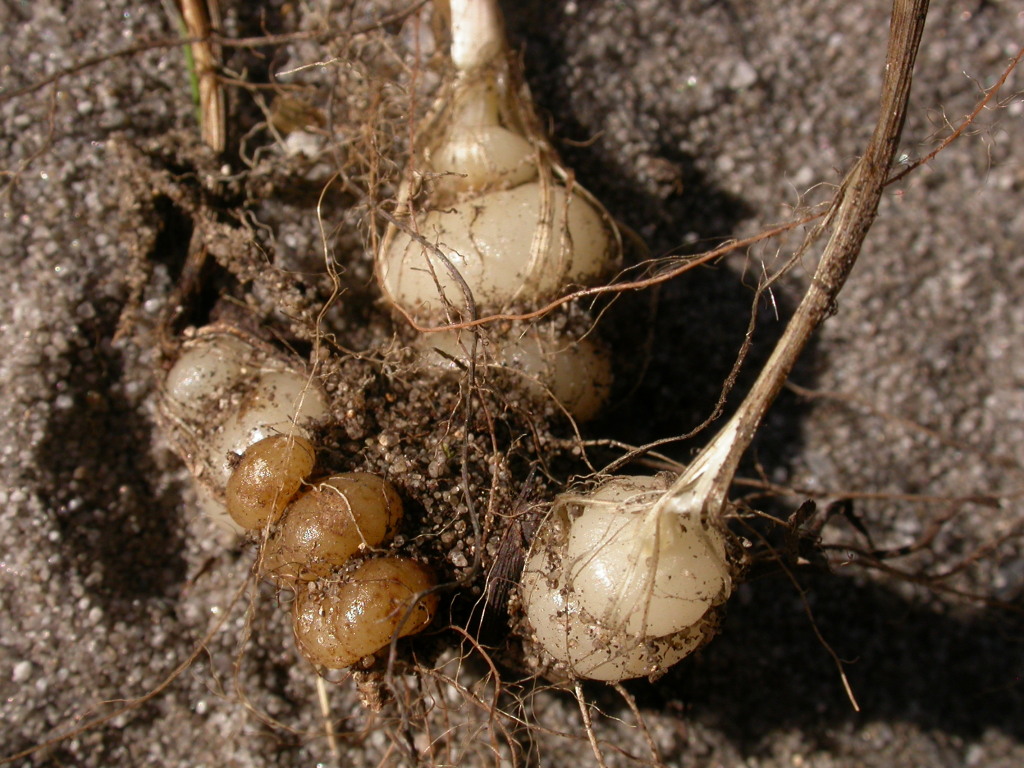Poa drummondiana
Nees Knotted PoaShortly rhizomatous perennial, the lower internodes usually swollen and bead-like, culms erect to c. 80 cm high. Leaves rather few, glabrous, smooth or slightly scabrous; sheath closed in the lower half, often purplish; blade flat or somewhat channelled, becoming closely folded toward the acute, often slightly incurved apex, to 30 cm long and 4 mm wide; ligule thinly membranous, often jagged, 2–7 mm long. Inflorescence an ovoid panicle with very fine, finally widely spreading branches, to c. 20 cm long and 15 cm wide. Spikelets 3–8-flowered, plump, broadly ovate at maturity, 6–12 mm long, 5–10 mm wide, often pendent (somewhat resembling Briza sp.), pale green or purplish; glumes 3–5-nerved, subequal, narrower than and about three-quarters as long as the lower lemma, smooth or sparsely scabrous on nerves; lemma 5-nerved, c. 4 mm long, very obtuse, thin-textured with broad membranous margins, ciliate along keel, lateral nerves and margins toward base, otherwise glabrous; web absent or rudimentary. Flowers Sep.–Nov.
LoM, MuM, Wim, RobP, MuF. Also WA, SA. Confined to the far west of the state where occurring on dunes and margins of clay-pans supporting mallee-scrub and low woodland (e.g. Sunset Country, Big and Little Deserts), but uncommon to rare and apparently heavily grazed, usually observed growing in the protection of dense Triodia tussocks.
Walsh, N.G. (1994). Poaceae. In: Walsh, N.G.; Entwisle, T.J., Flora of Victoria Vol. 2, Ferns and Allied Plants, Conifers and Monocotyledons, pp. 356–627. Inkata Press, Melbourne.
 Spinning
Spinning


